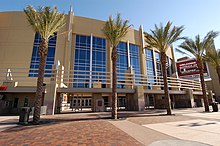

Medical malpractice can sometimes be challenging to identify, as patients often trust their healthcare providers implicitly. However, recognizing the signs of negligence is crucial to protecting your health and your rights. If you suspect malpractice in Glendale, understanding the warning signs can help you take timely action.
One of the most common indicators is unexpected or unexplained complications. While not all complications are due to negligence, if your health takes a sudden turn for the worse without a clear explanation, it may warrant closer examination. Similarly, a failure to improve after treatment could suggest that an error or misjudgment occurred.
Another red flag is a lack of communication from your healthcare provider. If your doctor fails to answer your questions, dismisses your concerns, or avoids providing clear explanations, it may be a sign that something has gone wrong. A competent provider should be transparent and willing to discuss your condition and treatment plan.
Errors in medication are another potential indicator. If you experience unusual side effects or discover discrepancies in your prescriptions, these could result from improper dosages, incorrect drugs, or harmful interactions. Pay close attention to any unexpected reactions and report them immediately.
In surgical cases, persistent pain, infection, or other complications beyond what was anticipated could point to negligence. Issues such as operating on the wrong site, leaving instruments behind, or failing to adhere to safety protocols can lead to severe consequences.
If you believe you’ve experienced any of these signs, it’s essential to consult with a Glendale medical malpractice lawyer. They can review your situation, help determine whether negligence occurred, and guide you through the process of seeking compensation.
The effects of medical malpractice go far beyond physical injuries. For many victims in Glendale, the emotional toll can be equally, if not more, devastating. Understanding and addressing these emotional challenges is an important part of the healing process.
Feelings of betrayal are common among medical malpractice victims. Patients place immense trust in their healthcare providers, and when that trust is broken, it can lead to anger, confusion, and doubt. This emotional response can make it difficult to seek care in the future, potentially delaying necessary treatment.
Victims often experience anxiety and depression as they navigate the aftermath of medical malpractice. Lingering health issues, financial stress, and the uncertainty of legal proceedings can create overwhelming mental burdens. Support from mental health professionals, family, and friends is crucial during this time.
For some, medical malpractice results in post-traumatic stress disorder (PTSD). This is particularly true in cases involving surgical errors, birth injuries, or life-threatening complications. Flashbacks, nightmares, and heightened anxiety are common symptoms that may require professional intervention.
Seeking justice through a medical malpractice claim can provide a sense of closure and validation. A Glendale medical malpractice lawyer can advocate for your rights, helping you focus on recovery while they handle the legal complexities.

A Glendale medical malpractice lawyer can provide a range of services to individuals who have been victims of medical negligence.. These legal professionals are well-versed in the complex laws and regulations surrounding medical malpractice cases, and they can offer invaluable guidance and support throughout the entire legal process. One of the primary services that a Glendale medical malpractice lawyer can provide is conducting a thorough investigation into the circumstances surrounding the alleged malpractice.
Posted by on 2024-11-21

When searching for a Glendale medical malpractice attorney, it's important to consider certain qualifications to ensure that you find the best legal representation for your case.. Medical malpractice cases can be complex and challenging, so having an experienced and knowledgeable attorney by your side is crucial. One of the first things to look for in a medical malpractice attorney is their experience in handling similar cases.
Posted by on 2024-11-21

When considering hiring a Glendale medical malpractice lawyer, one of the first questions that may come to mind is, "What compensation can I expect?" It's a valid concern, especially when dealing with the aftermath of a medical error or negligence. In general, the compensation you can expect from hiring a medical malpractice lawyer in Glendale will depend on the specifics of your case.. Every case is unique and will be handled differently based on factors such as the severity of the injury or harm caused, the extent of damages incurred, and the level of negligence demonstrated by the healthcare provider. A skilled medical malpractice lawyer will work tirelessly to secure the maximum amount of compensation possible for their client.
Posted by on 2024-11-21

A Glendale medical malpractice lawyer is a legal professional who specializes in handling cases where patients have suffered harm due to the negligence of healthcare providers.. These lawyers are experienced in navigating the complex world of medical malpractice law and are dedicated to helping their clients seek justice and compensation for the injuries they have sustained. Medical malpractice occurs when a healthcare provider fails to provide a standard level of care, resulting in harm to the patient.
Posted by on 2024-11-21
In medical malpractice cases, expert witnesses play a pivotal role in determining the outcome. Their testimony provides credibility and clarity, helping juries and judges understand the complex medical issues at the heart of the case.
An expert witness is typically a medical professional with experience in the same field as the defendant. Their primary responsibility is to evaluate whether the care provided met the accepted standard. For example, in a case involving a surgical error, the expert might analyze whether the surgeon followed proper protocols.
Beyond establishing negligence, expert witnesses also help link the malpractice to the patient’s injuries. This is critical because proving causation is often one of the most challenging aspects of these cases. Their testimony can show how the provider’s actions—or inaction—directly led to harm.
The selection of an expert witness is a task best handled by an experienced Glendale medical malpractice lawyer. They have access to a network of qualified professionals who can provide compelling testimony to support your claim.


While no one can completely eliminate the risk of medical malpractice, there are steps you can take to minimize your chances of experiencing negligence. Being proactive and informed can significantly improve your healthcare experience.
Start by choosing your healthcare provider carefully. Research their credentials, read patient reviews, and check for any history of malpractice claims. Don’t hesitate to ask questions during consultations to assess their communication style and approach to patient care.
Always advocate for yourself. Stay informed about your condition, treatment options, and medications. If something doesn’t feel right, speak up. Bringing a trusted family member or friend to appointments can provide additional support and perspective.
Maintain accurate and complete medical records. These can serve as valuable documentation if you suspect malpractice. Keep track of appointments, prescriptions, test results, and any communications with your provider.
If you’re unsure about a diagnosis or treatment plan, seek a second opinion. Another provider may identify potential issues or offer alternative approaches that align better with your needs.
If you suspect negligence, act quickly. Consulting with a Glendale medical malpractice lawyer early ensures that your rights are protected and that evidence is preserved.
When pursuing a medical malpractice claim, victims often face resistance from insurance companies. These entities are primarily focused on minimizing payouts, which can create significant challenges for victims seeking fair compensation.
Insurance adjusters may use various tactics to devalue your claim. They might argue that your injuries were pre-existing or that the provider’s actions were reasonable under the circumstances. Without proper legal representation, these arguments can derail your case.
Another common tactic is offering a lowball settlement early in the process. While this may seem tempting, especially if you’re facing financial strain, these offers rarely reflect the true value of your damages. Accepting such an offer can leave you without the resources needed for ongoing medical care or lost income.
A Glendale medical malpractice lawyer serves as your advocate in negotiations with insurance companies. They understand the tactics insurers use and are skilled at countering them. By building a strong case supported by evidence and expert testimony, your lawyer increases the likelihood of securing a fair settlement.


Compensation in medical malpractice cases serves two primary purposes: addressing the financial impact of the injury and holding negligent providers accountable. For victims in Glendale, understanding the types of damages available can help set realistic expectations.
Economic damages cover tangible losses, such as medical expenses, lost wages, and future earning potential. These are typically calculated based on bills, receipts, and expert assessments of long-term costs.
Non-economic damages address intangible losses, such as pain, suffering, and diminished quality of life. While these are harder to quantify, they are no less important. In California, non-economic damages are capped at $350,000 in medical malpractice cases, making it crucial to maximize other aspects of your claim.
In rare cases, punitive damages may be awarded to punish egregious negligence and deter similar behavior. However, these are not guaranteed and depend on the specifics of the case.
A Glendale medical malpractice lawyer can help you pursue the full compensation you’re entitled to, ensuring that your needs are met both now and in the future.
Glendale | |
|---|---|
 Downtown
Glendale | |
 Location in Maricopa County, Arizona | |
| Coordinates: 33°32′19″N 112°11′11″W / 33.53861°N 112.18639°W | |
| Country | United States |
| State | Arizona |
| County | Maricopa |
| Founded by | William John Murphy |
| Government | |
| • Mayor | Jerry Weiers (Non-Partisan) |
| • Vice mayor | Jamie Aldama |
| Area | |
• Total | 65.09 sq mi (168.59 km2) |
| • Land | 64.68 sq mi (167.53 km2) |
| • Water | 0.41 sq mi (1.06 km2) |
| Elevation | 1,152 ft (351 m) |
| Population | |
• Total | 248,325 |
| • Rank | US: 89th |
| • Density | 3,839.17/sq mi (1,482.30/km2) |
| Demonym | Glendalian |
| Time zone | UTC−7 (MST (no DST)) |
| ZIP code | 85301-85318 |
| Area codes | 602, 480, 623 |
| FIPS code | 04-27820 |
| GNIS feature ID | 5060[2] |
| Website | www |
Glendale (/ˈɡlɛndeɪl/) is a city in Maricopa County, Arizona, United States. Located about nine miles northwest of the state capital Phoenix, Glendale is known for State Farm Stadium, which is the home of the Arizona Cardinals football team. The city also contains the Arrowhead Towne Center shopping mall. As of the 2020 census, Glendale had a population of 248,325.[3]
In the late 1800s the area that is now Glendale was all desert. William John Murphy, a native of New Hartford, New York, who resided in the town of Flagstaff in what was then the territory of Arizona, was in charge of building the 40-mile-long (64 km) Arizona Canal from Granite Reef to New River for the Arizona Canal Company. In 1885, he completed the canal, which would bring water to the desert land.[4] Murphy was deep in debt, since he had agreed to be paid in Arizona Canal Company stock and bonds and land instead of cash.[5]

In 1887, Murphy formed the Arizona Improvement Company. His objective was to sell the land and water rights south of the canal. Murphy raised capital from out of state sources in order to meet payroll and construction expenses.[5] Murphy decided to refer to this land as "Glendale". In order to develop and interest potential investors and settlers in this new town, Murphy decided to provide a better way of access from Phoenix to Glendale and ending in the town of Peoria by building an 18-mile-long (29 km) diagonal road which he named Grand Avenue.
In 1891, Burgess Hadsell worked with Murphy to bring 70 Brethren and River Brethren families to Glendale to form a temperance colony. Soon settlers, attracted by the town's ban on alcoholic beverages, continued to arrive. In 1895, Murphy platted the original town site and amended the plat to include a town park and some business lots. It was bounded by Lamar Road on the south, 55th Avenue on the east, Myrtle Avenue on the north, and 59th Avenue on the west.[6] The construction of a railroad from Prescott to Phoenix was made possible with an exchange of the right-of-way made by Murphy along Grand Avenue.[4] The railroad allowed Glendale settlers to transport goods to the north and easily receive building materials.
The construction and commercial applications of the Beet Sugar Factory in 1906 also contributed to the growth of Glendale. Though the operations of the factory only lasted until 1913, it played an important role in the increase of immigrant and migrant settlers in the city.[7] Several other businesses were founded around this time such as Glendale Ice Company, Pacific Creamery Company, Glendale Milling Company, and Southwest Flour and Feed.[8]
World War I ushered in a renewal for Glendale, with cotton prices rising throughout the period. Cotton continues to be a source of economic prosperity in Glendale with many farms still along the Loop 101, despite many farmers switching to more profitable crops.[9] A high demand for food, also kept farmers busy. Numerous farms and orchards were established and thrived through the early 1900s.[10]
World War II brought the birth of Thunderbird Field to train civilian pilots for the Army. In late 1940, a few Hollywood actors and businessmen, headed by Leland Hayward, approached the Army to establish a primary flight training school. This group chose the site of Thunderbird Field primarily because of its abundance of space, excellent weather, and good visibility.[11] While this field was being built in 1941, the Army was busy working on a larger base for $4.5 million, Luke Field (now Luke Air Force Base). This base was named for the first pilot to receive a Medal of Honor, Lt. Frank Luke Jr. Thunderbird Field would later become the Thunderbird American Graduate School for International Management.
The military and college presence, as well as the increase in population (nearly doubling between 1950 and 1960),[12] sparked a need for utilities, parks, schools and streets. Over the next 40 years, the city added a landfill, water treatment plant, sewage plants, libraries, parks, public safety facilities, an airport, a city hall and a civic center.
Arrowhead Towne Center opened in 1993, and the surrounding neighborhood, Arrowhead Ranch, made the area a hotspot for housing and shopping. The completion of Loop 101 throughout Glendale opened the city to the rest of the Valley.[8]
In recent decades, the city has begun major investment into tourism. The establishment of the Westgate Entertainment District, housing Desert Diamond Arena, and State Farm Stadium in the early 2000s made Glendale a destination for locals and visitors. Construction of the VAI Resort and Mattel Adventure Park, scheduled to open in 2025, will continue to grow Glendale’s tourism economy creating hundreds of new jobs and proving more than a thousand new hotel rooms for the city.[13][14]
In 2024, the city called on the Department of Defense to lobby for Arizona Governor Katie Hobbs to veto bipartisan legislation to increase housing supply in Arizona. Ryan Lee, the city’s intergovernmental-programs director, confirmed to The Atlantic that he was behind the move. State Representative Analise Ortiz, whose district includes parts of Glendale, criticized the city for going behind legislators' back to lobby against the legislation, "This is not the way we typically go about creating policy."[15]
According to the United States Census Bureau, the city has a total area of 65.1 square miles (169 km2), of which 0.4 square miles (1.0 km2), or 0.63%, is water.[1] The New River and Agua Fria River flow southward through the western extremities of the city.
Glendale has a hot desert climate (Köppen: BWh) typical of Southern Arizona, with very hot and dry summers and mild winters.[16]
| Climate data for Phoenix Int'l, Arizona (1991–2020 normals,[a] extremes 1895–present)[b] | |||||||||||||
|---|---|---|---|---|---|---|---|---|---|---|---|---|---|
| Month | Jan | Feb | Mar | Apr | May | Jun | Jul | Aug | Sep | Oct | Nov | Dec | Year |
| Record high °F (°C) | 88 (31) |
92 (33) |
100 (38) |
105 (41) |
114 (46) |
122 (50) |
121 (49) |
118 (48) |
118 (48) |
113 (45) |
99 (37) |
87 (31) |
122 (50) |
| Mean maximum °F (°C) | 78.2 (25.7) |
82.1 (27.8) |
90.4 (32.4) |
99.0 (37.2) |
105.7 (40.9) |
112.7 (44.8) |
114.6 (45.9) |
113.2 (45.1) |
108.9 (42.7) |
100.7 (38.2) |
88.9 (31.6) |
77.7 (25.4) |
115.7 (46.5) |
| Mean daily maximum °F (°C) | 67.6 (19.8) |
70.8 (21.6) |
78.1 (25.6) |
85.5 (29.7) |
94.5 (34.7) |
104.2 (40.1) |
106.5 (41.4) |
105.1 (40.6) |
100.4 (38.0) |
89.2 (31.8) |
76.5 (24.7) |
66.2 (19.0) |
87.1 (30.6) |
| Daily mean °F (°C) | 56.8 (13.8) |
59.9 (15.5) |
66.3 (19.1) |
73.2 (22.9) |
82.0 (27.8) |
91.4 (33.0) |
95.5 (35.3) |
94.4 (34.7) |
89.2 (31.8) |
77.4 (25.2) |
65.1 (18.4) |
55.8 (13.2) |
75.6 (24.2) |
| Mean daily minimum °F (°C) | 46.0 (7.8) |
49.0 (9.4) |
54.5 (12.5) |
60.8 (16.0) |
69.5 (20.8) |
78.6 (25.9) |
84.5 (29.2) |
83.6 (28.7) |
78.1 (25.6) |
65.6 (18.7) |
53.7 (12.1) |
45.3 (7.4) |
64.1 (17.8) |
| Mean minimum °F (°C) | 36.0 (2.2) |
40.0 (4.4) |
44.4 (6.9) |
50.1 (10.1) |
58.4 (14.7) |
69.4 (20.8) |
74.4 (23.6) |
74.2 (23.4) |
68.3 (20.2) |
53.8 (12.1) |
42.0 (5.6) |
35.4 (1.9) |
33.8 (1.0) |
| Record low °F (°C) | 16 (−9) |
24 (−4) |
25 (−4) |
35 (2) |
39 (4) |
49 (9) |
63 (17) |
58 (14) |
47 (8) |
34 (1) |
27 (−3) |
22 (−6) |
16 (−9) |
| Average precipitation inches (mm) | 0.87 (22) |
0.87 (22) |
0.83 (21) |
0.22 (5.6) |
0.13 (3.3) |
0.02 (0.51) |
0.91 (23) |
0.93 (24) |
0.57 (14) |
0.56 (14) |
0.57 (14) |
0.74 (19) |
7.22 (183) |
| Average precipitation days (≥ 0.01 in) | 3.8 | 4.1 | 3.1 | 1.5 | 1.0 | 0.5 | 3.9 | 4.6 | 2.5 | 2.2 | 2.2 | 4.0 | 33.4 |
| Average relative humidity (%) | 50.9 | 44.4 | 39.3 | 27.8 | 21.9 | 19.4 | 31.6 | 36.2 | 35.6 | 36.9 | 43.8 | 51.8 | 36.6 |
| Average dew point °F (°C) | 32.4 (0.2) |
32.2 (0.1) |
32.9 (0.5) |
31.6 (−0.2) |
34.3 (1.3) |
39.0 (3.9) |
56.1 (13.4) |
58.3 (14.6) |
52.3 (11.3) |
43.0 (6.1) |
35.8 (2.1) |
33.1 (0.6) |
40.1 (4.5) |
| Mean monthly sunshine hours | 256.0 | 257.2 | 318.4 | 353.6 | 401.0 | 407.8 | 378.5 | 360.8 | 328.6 | 308.9 | 256.0 | 244.8 | 3,871.6 |
| Percent possible sunshine | 81 | 84 | 86 | 90 | 93 | 95 | 86 | 87 | 89 | 88 | 82 | 79 | 87 |
| Average ultraviolet index | 3.1 | 4.4 | 6.6 | 8.5 | 9.7 | 10.9 | 11.0 | 10.1 | 8.3 | 5.6 | 3.7 | 2.7 | 7.0 |
| Source 1: NOAA (dew points, relative humidity, and sun 1961–1990)[17][18][19], Weather.com[20] | |||||||||||||
| Source 2: UV Index Today (1995 to 2022)[21] | |||||||||||||
| Census | Pop. | Note | %± |
|---|---|---|---|
| 1910 | 1,000 | — | |
| 1920 | 2,737 | 173.7% | |
| 1930 | 3,665 | 33.9% | |
| 1940 | 4,855 | 32.5% | |
| 1950 | 8,179 | 68.5% | |
| 1960 | 15,893 | 94.3% | |
| 1970 | 36,228 | 127.9% | |
| 1980 | 97,172 | 168.2% | |
| 1990 | 147,864 | 52.2% | |
| 2000 | 218,812 | 48.0% | |
| 2010 | 226,721 | 3.6% | |
| 2020 | 248,325 | 9.5% | |
| U.S. Decennial Census[22] | |||
| Race / Ethnicity (NH = Non-Hispanic) | Pop 2000[23] | Pop 2010[24] | Pop 2020[25] | % 2000 | % 2010 | % 2020 |
|---|---|---|---|---|---|---|
| White alone (NH) | 141,462 | 116,866 | 107,695 | 64.65% | 51.55% | 43.37% |
| Black or African American alone (NH) | 9,818 | 12,766 | 17,872 | 4.49% | 5.63% | 7.20% |
| Native American or Alaska Native alone (NH) | 2,460 | 2,707 | 3,030 | 1.12% | 1.19% | 1.22% |
| Asian alone (NH) | 5,860 | 8,618 | 11,272 | 2.68% | 3.80% | 4.54% |
| Pacific Islander alone (NH) | 230 | 355 | 492 | 0.11% | 0.16% | 0.20% |
| Other race alone (NH) | 289 | 329 | 1,171 | 0.13% | 0.15% | 0.47% |
| Mixed race or Multiracial (NH) | 4,350 | 4,579 | 9,176 | 1.99% | 2.02% | 3.70% |
| Hispanic or Latino (any race) | 54,343 | 80,501 | 97,617 | 24.84% | 35.51% | 39.31% |
| Total | 218,812 | 226,721 | 248,325 | 100.00% | 100.00% | 100.00% |
As of the census of 2010, there were 226,710 people, 79,114 households, and 54,721 families residing in the city. The population density was 3,929.5 inhabitants per square mile (1,517.2/km2). There were 79,667 housing units at an average density of 1,430.7 per square mile (552.4/km2). The racial makeup of the city was 75.54% White, 6% Black or African American, 1.7% Native American, 3.9% Asian, 0.2% Pacific Islander, 16.95% from other races, and 4.0% from two or more races. 35.5% of the population was Hispanic or Latino of any race.
There were 79,114 households, out of which 39.9% had children under the age of 18 living with them, 53.5% were married couples living together, 12.8% had a female householder with no husband present, and 28.2% were non-families. 21.3% of all households were made up of individuals, and 5.8% had someone living alone who was 65 years of age or older. The average household size was 2.85 and the average family size was 3.33.
In the city, 30.1% of the population was under the age of 18, 10.8% was from 18 to 24, 31.9% from 25 to 44, 19.9% from 45 to 64, and 7.4% was 65 years of age or older. The median age was 31 years. For every 100 females, there were 99.6 males. For every 100 females age 18 and over, there were 97.1 males.
The median income for a household in the city was $45,015, and the median income for a family was $51,162. Males had a median income of $35,901 versus $27,736 for females. The per capita income for the city was $19,124. About 8.8% of families and 11.9% of the population were below the poverty line, including 15.3% of those under age 18 and 9.5% of those age 65 or over.
| # | Employer | # of Employees |
|---|---|---|
| 1 | Luke Air Force Base | 5,100 |
| 2 | Banner Health | 3,000 |
| 3 | Arrowhead Towne Center | 2,650 |
| 4 | Walmart | 2,175 |
| 5 | Glendale Union High School District | 1,974 |
| 6 | Glendale Community College | 1,948 |
| 7 | The City of Glendale | 1,693 |
| 8 | Deer Valley Unified School District | 1,594 |
| 9 | Glendale Elementary School District | 1,400 |
| 10 | Tanger Outlets | 1,200 |
Source: AZCentral.com[26]


Glendale is noted for its retail sales of antiques.[30]
The Arrowhead Towne Center mall is located here.
Glendale was temporarily renamed as Swift City on March 17 and 18, 2023,[31] as per the mayor and the city council's proclamation,[32] to celebrate the opening concerts of the Eras Tour, the sixth concert tour by American singer-songwriter Taylor Swift, at State Farm Stadium.[33] The Westgate Entertainment District, a mixed-use complex in the city, additionally put up welcoming messages, with the local restaurants offering Swift-themed menu items.[34][35] State Farm also hosted the Super Bowl LVII halftime show, headlined by Barbadian singer Rihanna, shortly before the tour.[36]


Glendale is the site of two major sports venues: State Farm Stadium and Desert Diamond Arena. Both venues are part of the Glendale Sports and Entertainment District development plan, meant to spur growth in the sparsely inhabited Yucca district. Both venues are owned by the City of Glendale.
State Farm Stadium has been the home field of the Arizona Cardinals in the National Football League since 2006, and the annual Fiesta Bowl college football game since 2007. Both the Cardinals and bowl game moved from Sun Devil Stadium on the Arizona State University campus in Tempe. Since opening, the facility has hosted three Super Bowls, three college football national championship games, the NCAA Men's Basketball Final Four, WrestleMania XXVI and International Champions Cup soccer to Glendale. Designed by architect Peter Eisenman, the stadium was featured on The History Channel TV series, Modern Marvels because of its roll-out natural grass field.
Desert Diamond Arena (formerly Glendale Arena, then Jobing.com Arena and Gila River Arena) and Westgate City Center is adjacent to State Farm Stadium, and was the home of the Arizona Coyotes of the National Hockey League (NHL). It was also the home of the now defunct Arizona Sting of the National Lacrosse League (NLL). The inaugural Street League Skateboarding event was held in the summer of 2010 in Glendale at the Gila River Arena. This street skateboarding competition returns to Glendale annually. Currently, the arena hosts the Arizona Rattlers of the Indoor Football League.
In 2009, the Los Angeles Dodgers and the Chicago White Sox of Major League Baseball began to share the new Camelback Ranch-Glendale spring training complex and stadium in Glendale owned and operated by the City of Glendale.
There are a number of higher education campuses in Glendale. Glendale Community College and Glendale Community College North, just across the border in northwestern Phoenix, are members of the Maricopa County Community College District. Arizona State University’s Thunderbird School of Global Management was founded in Glendale at Thunderbird Field after World War II and recently relocated its campus to the downtown location of ASU after joining the university as an independent unit dedicated to international business education. West campus is just across the border from Glendale in west Phoenix. Midwestern University is a graduate college of medicine located in Glendale.
Many school districts serve the city of Glendale.
The following school districts serve the city:
Grace Lutheran School is a Pre-K-8 Christian school of the Wisconsin Evangelical Lutheran Synod (WELS) in Glendale.[38]
New Gains Academy is a grade 5-12 Microschool in Glendale. with academics, business entrepreneurship, piano, voice, dance and art programs.
Our Lady of Perpetual Help Catholic School is a Pre-K-8 Catholic school of the Roman Catholic Diocese of Phoenix in Glendale.[39]
Arrowhead Christian Academy is a K-12 Christian school associated with Northwest Valley Baptist Church in Glendale.[40]
The city of Glendale has a roughly average percentage of households without a car. In 2015, 8.4 percent of Glendale households lacked a car, and increased slightly to 9 percent in 2016. The national average was 8.7 percent in 2016. Glendale averaged 1.72 cars per household in 2016, compared to a national average of 1.8.[41]
Glendale Municipal Airport serves the city but it does not offer commercial air services. The closest commercial airport is Phoenix Sky Harbor International Airport, located about 30 minutes away by car.
Glendale has two sister cities:
If you believe you have suffered harm due to negligence or misconduct by a healthcare provider, it is advisable to consult with a Glendale Medical Malpractice Lawyer to determine the validity of your claim.